When you watch some of the top artists paint, you may be wondering how they do it so fast! They seem to make every stroke without hesitation and the canvas quickly takes form and fills with color.
The reason they are able to paint so fast is mostly due to experience. The top artists are able to make quick decisions, which is really what allows them to paint so quickly. It is not because they are making rushed strokes with their brush. In fact, it is usually quite the opposite. They will make a quick decision, then a calm, calculated brush stroke.
Experience cannot be substituted, but there are some practices you can adopt which will help you paint faster and more efficiently. It is also important to stress that by faster, I do not mean recklessly. You should always be calculated and deliberate with your strokes.
Anyway, here are 5 tips to help you paint faster and more efficiently.
- Use Larger Brushes and Palette Knives
- Use More Gestural and Broad Strokes
- Simplify the “Noise”
- Plan Your Painting
- Paint Less Complicated Subjects
- Summary
- Want to Learn More?
- Thanks for Reading!
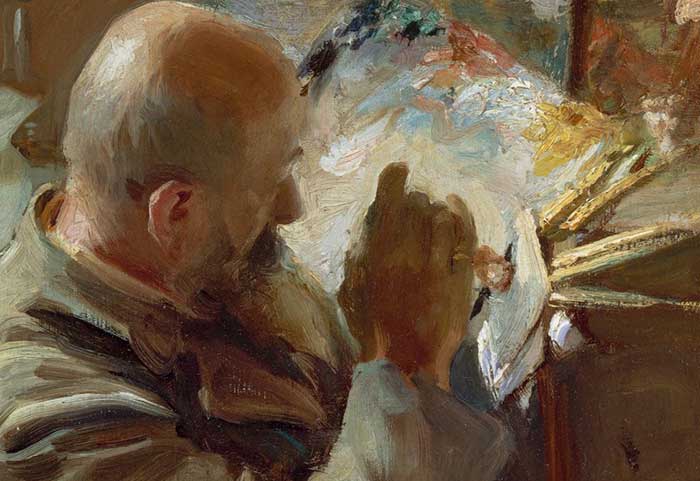
Use Larger Brushes and Palette Knives
You should be doing most of your work with medium to large-sized brushes. I like to think of the large filberts and flats as the “workhorses” of the painting process. The smaller brushes are only necessary for the really fine details, depending on your painting style.
Using a large brush achieves a few things:
- You will be able to cover the canvas quickly.
- You will be able to create brush marks which are not possible with smaller brushes.
- You will learn to treat every stroke with importance and meaning.
I suggest you do a quick assessment of the brushes you most frequently use and determine if you need to start incorporating some larger brushes into your arsenal.
The palette knife can also be an extremely useful tool for creating bold strokes of color which are not possible with a brush. You can also use a palette knife to quickly scrape away paint from an area which you would like to re-do.

Use More Gestural and Broad Strokes
When you start a painting, you should use very gestural and broad strokes to quickly capture the essence of what you are painting. Once you have the essence on the canvas, you can start building more form and structure.
Try to capture the general flow and movement of the scene you are painting. Even if the scene you are painting is mostly static (like a landscape), you should still be thinking about the gesture of the scene and how everything is connected.
Make sure when you are making these broad strokes that you use the full action of your arm, not just the action of your wrist. The range of movement from your wrist is actually very limited.
Take advantage of the early stages of a painting and really try to get a feel for the subject. You can see Claude Monet was doing this in his unfinished painting below in the lower part of the body.
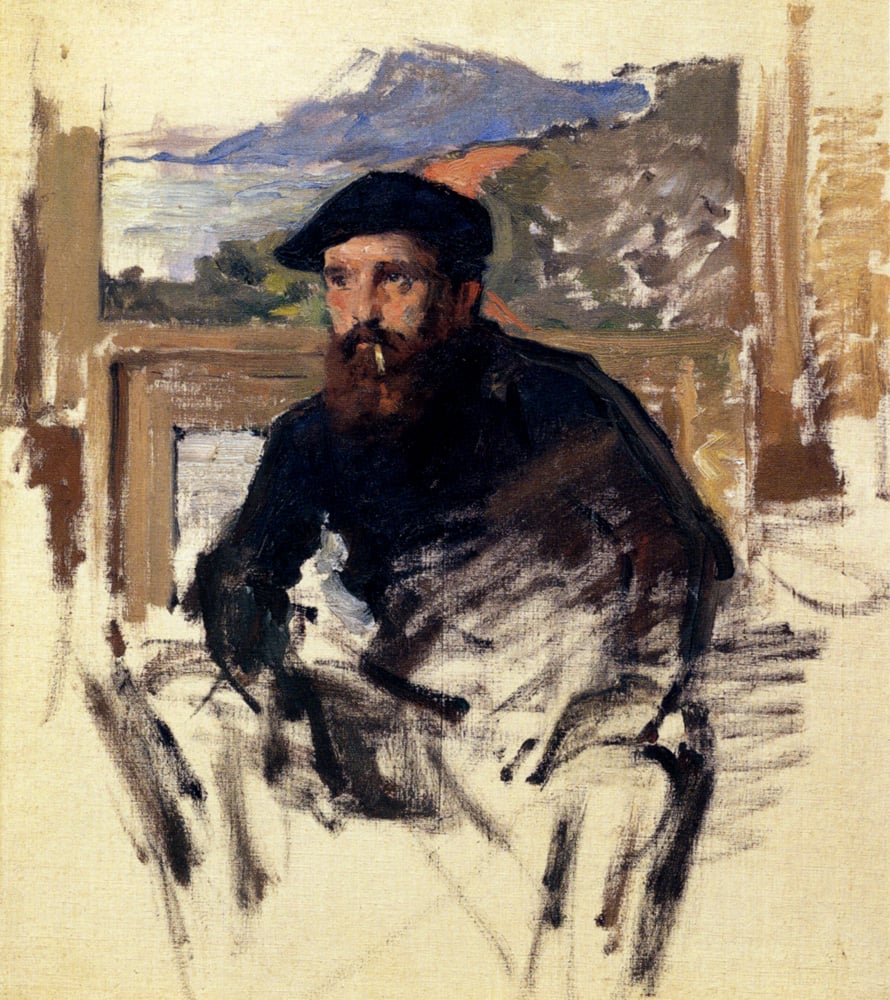
Simplify the “Noise”
If you try to paint everything in the scene with complete accuracy, then of course the painting will take ages to finish. You should try to identify what is actually important in the scene and simplify the rest.
Think about the areas where your eyes are drawn to the scene. These areas will usually be your key features. Everything else can be painted out of focus.
If you are painting from a photo, remember that the photo does not capture what we actually see. A photo will usually capture everything in focus, however when we focus on something in life we tend to tune out all the “noise”.
In the painting below by John Singer Sargent, notice how basic the painting is if you take out the main two subjects. The background is literally nothing but a few general shapes and colors. But you don’t notice as you should be focused on the two subjects in the middle.
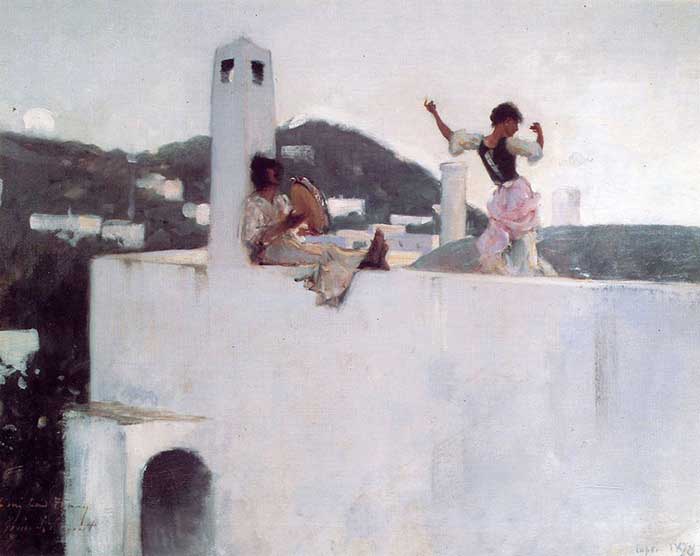
Plan Your Painting
I spend a considerable amount of time planning my paintings. Most of the work is done before I actually pick up a brush.
The planning includes:
- Deciding what to paint
- Taking appropriate photos (if I am not painting from life)
- Analyzing the photos and picking an appropriate one to paint from
- Considering a strategy for the painting
- Doing quick notan or color studies (sometimes)
The planning stage allows me to paint fluently and usually without interruption once I pick up the brush. It also prevents many mistakes during the painting process.
Paint Less Complicated Subjects
I find complicated subjects to be incredibly demanding on me mentally. They also require so much more time to complete as you need to take so much care with the drawing. Of course, a complicated subject will help you improve in terms of drawing and composition, however, those are only two aspects of painting. There are other aspects you can focus on like color, value and brushwork.
Painting a basic subject is not necessarily an easy task. In fact, it can sometimes be more challenging to succeed with as you are not able to rely on the complex nature of the subject to create interest. Your handling of the paint and artistic elements becomes the focus of the painting, rather than the subject itself.
Take a look at the beautiful painting below by Claude Monet. The subject is literally nothing but water lilies on the water. But the stunning use of color and brushwork makes this painting appear incredibly sophisticated.
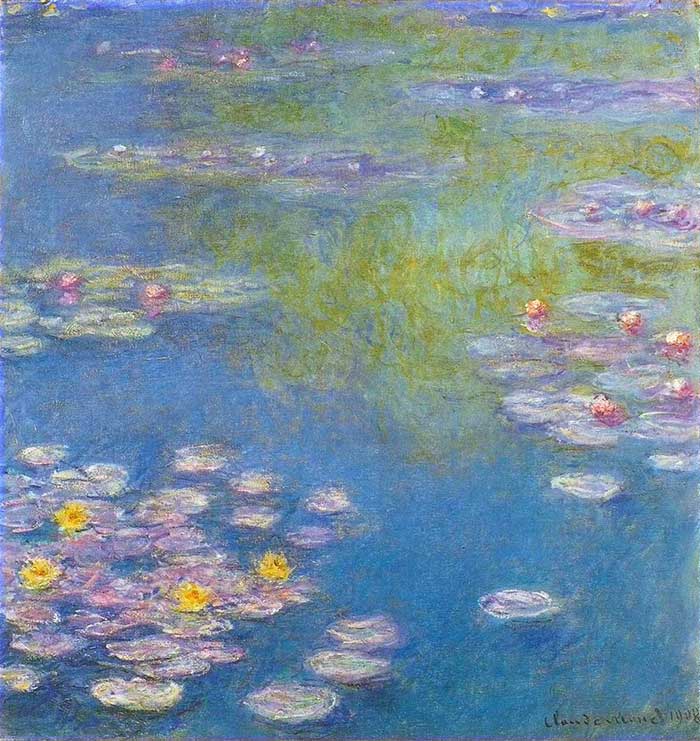
Summary
I hope you enjoyed these tips for painting faster and more efficiently. I will reiterate that painting faster does not mean painting recklessly. It just means you are painting without hesitation.
Want to Learn More?
You might be interested in my Painting Academy course. I’ll walk you through the time-tested fundamentals of painting. It’s perfect for absolute beginner to intermediate painters.
Thanks for Reading!
I appreciate you taking the time to read this post and I hope you found it helpful. Feel free to share it with friends.
Happy painting!
Dan Scott

Draw Paint Academy

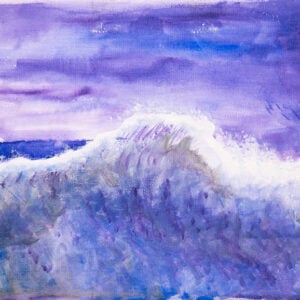


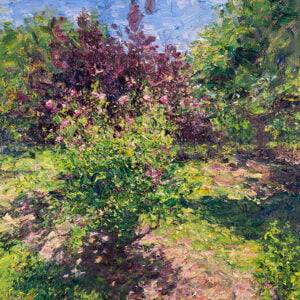


Excellent article Dan. I have a bad habit of nitpicking with little dots and dabs in my landscapes. I’ve made notes and my next painting I will experiment with John Singer Sargent’s example of, out of focus and keeping my main subject in focus. It’s definitely going to tough but it will teach me discipline. Lol
Thanks Trisha! Let me know how it goes.
Dan
Thank you for this wonderful lesson on painting without hesitation, but not recklessly! I am guilty of laboring over a painting until it just looks tired and overworked. I am going to really try to work faster and more efficiently!
No problem Toni! Dan
Hi Dan. Your tips on using the right brushes are very informative. I tend do a lot of blending which actually destroys my brushwork.
It’s really nice information thank you
Thanks! Dan
Thanks for reminding me that the preliminary planning of the painting is ESSENTIAL! So often I start a painting without knowing where it will take me… sometimes it works but most times it ends up in failure and on the “re-do” pile!
No problem Leya!
Dan
It is really helpful to the beginners like me
Planning is most important before we start is great tip for me
Glad to hear Gururaj, Dan.
Well said ,fast but not rash.
I was confused as to where to start off.
Thanks Dan
Thanks Sudha
Thanks for the article it was very informative and helpful ,you don’t always get this much information from a class as there’s so much other stuff to take in
Thank you for their article it will help me a beginners like me
I am & always have been a nitpicker getting lost in too many details.
Thanks for the reminder relax with bigger brushes. Also the colour/value/brushwork bit.
No problem thanks Jen
You are amazing man!
Hi Dan, I just find you on the net today, nice and easy advise for beginners like me, thank you.?
Thanks for all the information , I sweat over the small details and paint mixtures. Will definitely start with bigger brushes. The shadowing is difficult for me
No problem Carolyn. Happy to help! Thanks, Dan
Thank you for your very helpful painting tips I look forward to them and apply them to my painting
Great to hear Sylvia! Dan
Very interesting.
Dan All GREAT advice for me.
I am stuck in a rut of SMALL brushes and details. Need to let myself go on canvas .
I HAVE enjoyed PAINTING for
As long as I can remember.
Happy to hear you enjoy painting! Keep up the good work. Dan
Thanks a lot for these tips on painting. I am assisting to painting lessons but I find much more useful you tips, clear and simple. Sorry if I made mistakes with my writing , I am spanish speaker from Argentina. kind regards
Does this information also apply when using acrilyc paints?
Hi Tieny. It does but you need to be aware that acrylics dry much faster than oils. Dan
Great painting efficiency advice! Having a clean, brightly lit workspace is also quite useful in my opinion. It prevents interruptions and enables me to concentrate on making art more effectively.